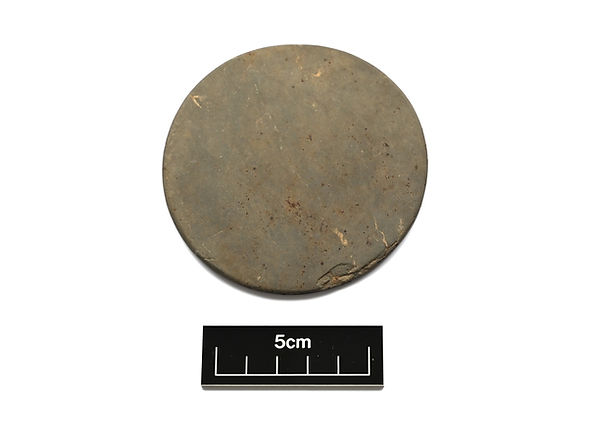
2024 Knowe of Swandro Excavation
Excavation at the multi period site of Swandro this season concentrated on the monumental roundhouse which forms the focus of the settlement.
Below: Overhead photo of main excavation trench showing entrance passageway to Iron Age roundhouse on left, with roundhouse subdivisions and hearths.

This building exhibits a complex sequence of construction, representing several major building phases and other phases of more minor modifications. On the seaward (NW) side the roundhouse had been partially destroyed by the sea. This truncation provided the opportunity to investigate deposits relating to the earlier phase of the roundhouse, below the internal wall of an inserted wheelhouse form. Excavation revealed a series of earlier structural elements, including a substantial double-faced wall underlying the floor of the later roundhouse and unrelated to it. Pottery from these earlier deposits was distinctively different from the pottery assemblages from the later wheelhouse, having angular stone temper and a flat splayed rim, characteristic of the early Iron Age as seen from sites such as Structure 5, Tofts Ness, Sanday (see: Dockrill, S J with Bond, J M, Nicholson R and Smith A N. 2007 Investigations on Sanday, Orkney Vol 2. Tofts Ness: An island landscape through 3000 years of Prehistory. Kirkwall: The Orcadian (Historic Scotland).
Excavation within the later roundhouse revealed a number of structural elements indicative of piers standing free of the inner wall, suggesting a phase in which the building took the form of an aisled wheelhouse. A central passage led from the long entrance, providing access to a series of ‘rooms’ around the circumference of the building and leading directly into a room opposite the entrance, containing a rectangular hearth with whale vertebra sockets inserted on either side and an intact floor. An unfinished whalebone weaving comb with a distinctive ‘fishtail’ handle was excavated in this room as well as a fine polished stone disc.

Iron Age polished stone disc after cleaning and conservation
To the seaward side, the archaeological deposits have been truncated by the sea but excavation revealed a series of hearths indicative of some form of processing or craft work. In the room on the seaward side of the one containing the rectangular hearth, the remains of a furnace was partially excavated in 2023. This season the furnace was fully excavated and recorded by archaeometallurgist Dr Gerry McDonnell and confirmed to be for iron smelting.

To the landward side, a distinct room created by the use of orthostats and stone walling (Structure 5) contained a series of floors and hearths below those recorded in the previous season. These hearths, constructed against the inner wall, were again suggestive of semi-industrial processing activities of some kind. There was a distinct lack of artefacts or animal bone debris suggestive of domestic activity in this phase in contrast to the later deposits excavated in previous years, adding strength to the argument for craft specialisation and processing in this phase. The exception to this was a small copper alloy object found amongst a group of stones which seems to be a belt hook of Roman Iron Age date.

Whalebone fish tail weaving comb